five things i learned from pass the pork blogger tour
Last week, I jetted off to Iowa City, Iowa to attend the Pass the Pork Blogger Tour hosted by the National Pork Board.
I had never been to Iowa City, which is strange because growing up in Kansas you would think I would have at least driven through the city of literature. So, needless to say, a visit was overdue. I was exited to get the ins and outs of the pork industry as well as eat all things bacon, of course.
Let me back up for a sec. You might be asking, what the heck is Pass the Pork Blogger Tour? Farming is a way of life not only in Kansas, but in a majority of the Midwest. I have met dozens of farmers so I thought I had nuts and bolts of farm life figured out. To be completely honest, I thought I also knew a thing or two about #realpigfarming.
Well, friends, I didn’t have a clue. What little I knew about pig farming, the pork industry, and what it takes to get bacon to the table…I threw it all out the window. I was completely ignorant of what goes on behind the scenes. I left Iowa City after spending a full day on the Brenneman family farm and I am forever changed.
So, fry up some bacon, pour yourself a cup of coffee, and let me explain the top five things I learned from Pass the Pork Blogger Tour. Get. READY.
1) Pork Industry in Iowa
Did you know that the ratio of pig to person in Iowa is 7 to 1? Yep, yep. That means there are more pigs rummaging around than humans. Sounds strange, but if you knew that Iowa is the largest pork producing state in the U.S. it would totally make sense.
But, why Iowa? Well, you need to ask yourself first, what do pigs eat? Iowa farmers produce lots of soybeans and corn, the main staples of a pig’s diet. One hog consumes about 9 to 10 bushels of corn from birth to market. The average weight of a hog going to market is 275 lbs. according to the Iowa Pork Producers.
Think of one giant farming eco-system: farmers raise and feed pigs, pigs poop turns into ferlitzer, fertilizer goes on the crops, and the crops feed the pigs. For a farmer, that’s being both efficient and sustainable. Without being sustainable and providing healthy pork, Iowa wouldn’t be able to be the largest pork exporting state. Iowa ships pork to places like Japan, Mexico, South Korea, and Canada. It’s crazy to think that the sun never sets on pork products from Iowa. Do I hear an oink, oink?
2) PIGS
Okay, Charoltte’s Web didn’t do us any favors. Yes, we can thank Fern for not killing Wilbur, but it doesn’t even scratch the surface on what it means to raise a healthy pig from birth to adult. I guess this is where I should mention pigs are extremely efficient, but also have short lifespans. A sow (a female pig) who is pregnant for the first time has a gestational period of three months, three weeks, and three days. A typical sow’s due date is generally only off by a day or two. Crazy, right? In case you were wondering, how do the sows get prego? Well, from a little help from AI (artificial insemination) farmers can decide what breed is producing stronger piglets, which at the end of the day leads to healthy pig and thus healthy pork!
Now, most folks have this vision that pigs are dirty, flop around in mud, flies everywhere, and nasty diseases are spread. This is not the truth at all. Actually, when we toured the Brenneman farm (one of the largest pork producing farms in Iowa) they put their sows in a crate where the sow is forced to lay down to help with the birthing process. This keeps everything clean because let’s face it when your average litter is around 14 piglets you need OR room cleanliness to nurse immediately. Also, by laying down it helps keep the still-born rate low because you can assist the pig with the birthing process. I had a chance to actually “sleeve a sow” and it was the most beautiful experience. It wasn’t scary at all; and to know that I was able to help make her comfortable was super awesome.
3) Cooking with Pork
Growing up, I didn’t eat a lot of pork. Chicken or beef were the only proteins that my mother preferred cooking. Well, times have changed. Mr. B and I,on average, cook with pork two to three times a week. Whether it’s pork chops, pork tacos, pulled pork, or pork chorizo stuffed peppers, I could seriously go on. Look at this way, if you want to incorporate more pork into your diet simply replace ground beef for ground pork in your spaghetti sauce. Pork is that versatile!
Now, you may be thinking, I always over cook my pork chops or any other pork cut because I’m afraid of the pink center. Friends, the pink center is your best friend. Now that the USDA has lowered the pork safety temperature to 145 degrees it’s making that dried out, rock hard pork chop a thing of the past. But! You have to remember the reason why this is possible is because of safe and sustainable pig care like the Breneman farm. I’ll say it again, healthy pigs means healthy pork!
So, I challenge you to make a pork dish this weekend. And I might suggest making ham balls. Apparently they are an Iowan delicacy. Anyways, I had a chance to gobble some up during my trip and they are life changing.
4) Family Farming
Hard work doesn’t even begin to describe what it takes to be a modern farmer. Standards keep changing, the consumer is more demanding, you have to be bigger, better, faster and stronger. I had a chance to tour the Brenneman farm, one Iowa’s largest pork producing farms in Washington County. The farm is family-owned and operated since 1980 and to say they care about their pigs is an understatement. They are a fully integrated swine and grain operation. Like I mentioned above, they take pride in providing a fully sustainable farm ecosystem.
But the Breneman’s take it a step further. While on the farm, we had to shower in and shower out. Meaning, before we could actually step into the facility where the pigs are being birthed, weaned, and raised, we had to be completely germ free. The reason is for bio security to make sure everything is safe for the swine, which you probably guessed equals happy and healthy pork! Once we were showered and ready to go, we got the full tour and let me tell you, it’s state of the art. Since all the pigs are in crates I was worried the smell would be terrible and the pigs would be freaking out. Not the case at all. Everything was clean, quiet and nurturing. Once we left the farm, I wanted to hug each member of their family because you can see their passion and determination to raise happy pigs.
Next time, you see a member of a family hog farm give them a hug, because without them, we just might live in a bacon-less world.
5) Don’t Take Food for Granted
The final takeaway from my trip to Iowa was something so simple; don’t take your food for granted. There are folks working night and day to make sure you have healthy food at your dinner table. Someone is harvesting corn, sleeving a sow, lobbying for better food production, and researching ways to breed better animals – all of this is done behind the scenes. So, when you are at the grocery store next time, take a moment and realize that American pork producers are the best!
And that’s a wrap! I want to thank Erin, Tim, Char, and Rob Brenneman for opening our eyes and for letting us tour your farm. Also, a big thanks to the National Pork Board for expanding our pork horizons.
Until next time, Iowa!
***This post was sponsored by the National Pork Board. As always, all opinions expressed are 100% my own.***


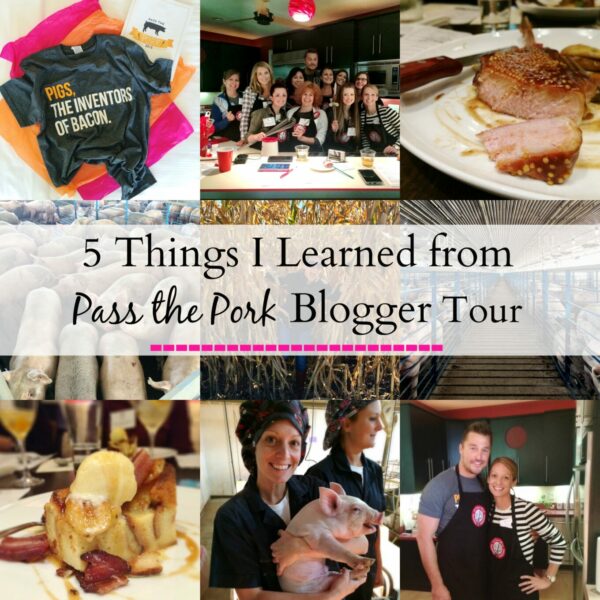
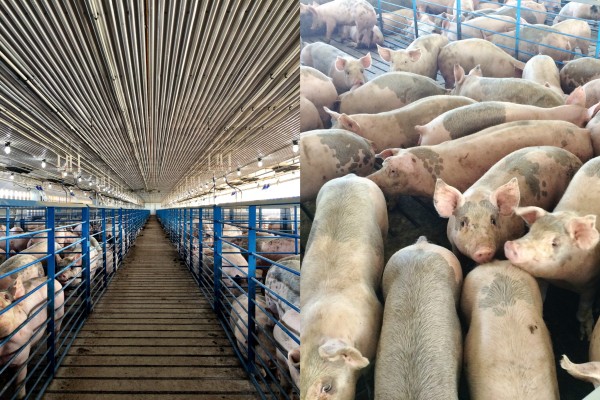
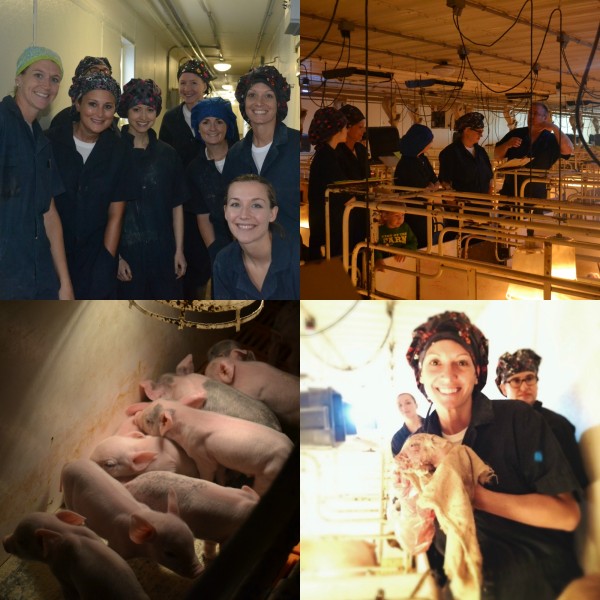
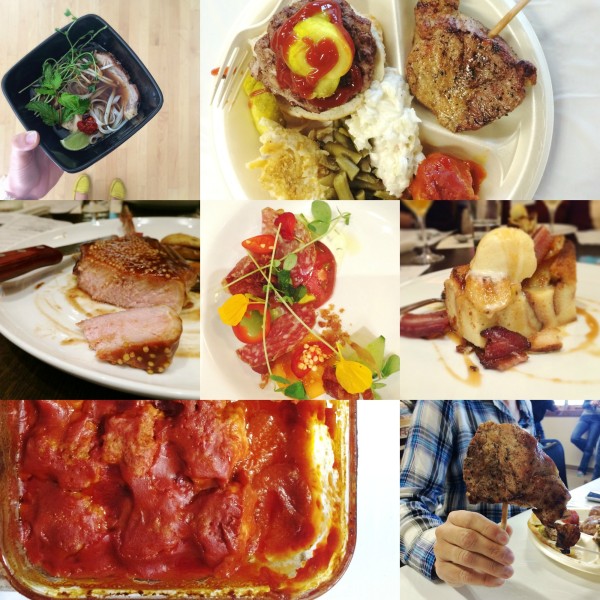
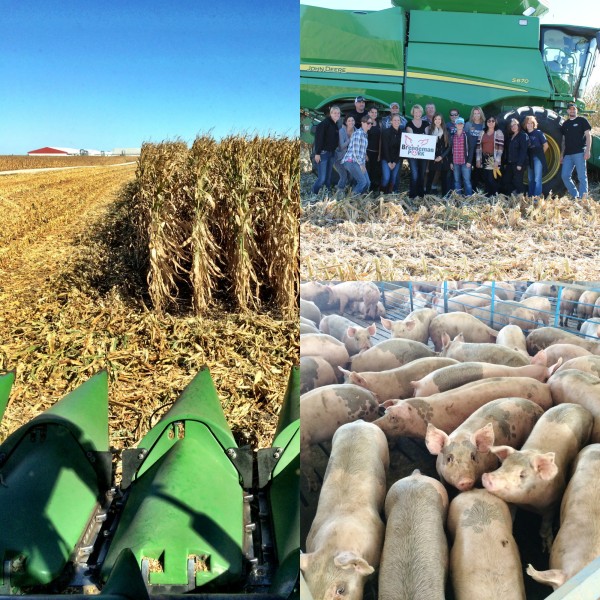

As a KC gal who grew up on a farm and now works in the pork industry, thank you for this post!
Lisa – Thank you!! I hope I’ve opened a few more eyes. The pork industry is truly amazing!
I’m so happy you had a great time in my home state of Iowa! I live just 25 minutes from Iowa City and saw that you girls were in town. What a great experience, I hope you’ll come back sometime!
I was in FFA and raised pigs in high school. I LOVE pigs. And I LOVE their meat! Makes me want some thick cut bacon!
I LOVE this!!
I love stories like this! Sounds like you had a wonderful time and learned a lot to boot. As a matter of fact, so did we. Thanks for sharing!
Ham balls are indeed a life changing experience. I just love trying regional favorites while travelling, and then bringing them home to my own table. Cooking pork to 145 degrees F rather than the internal temp of shoe leather is a total game changer.